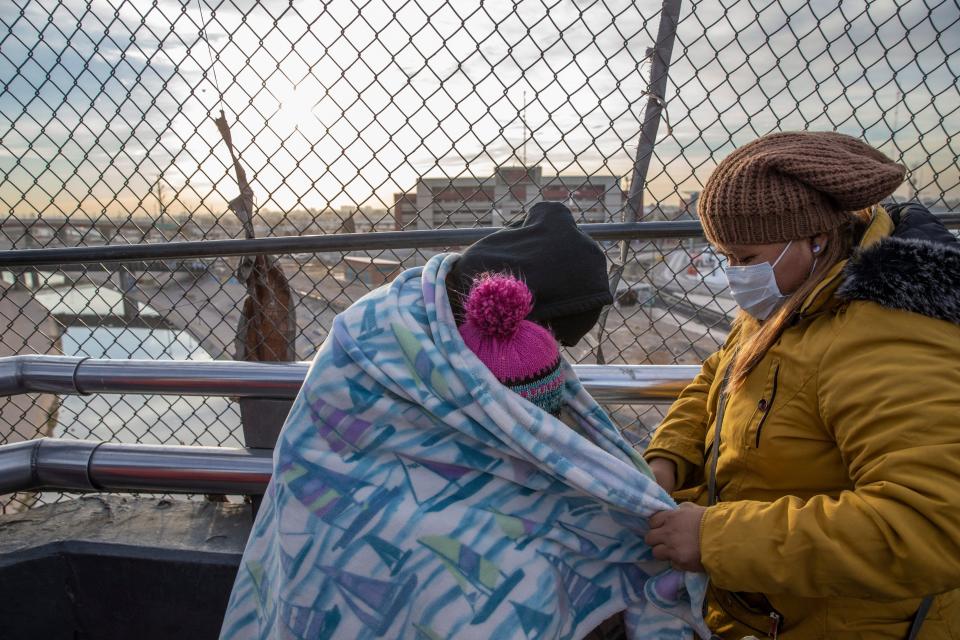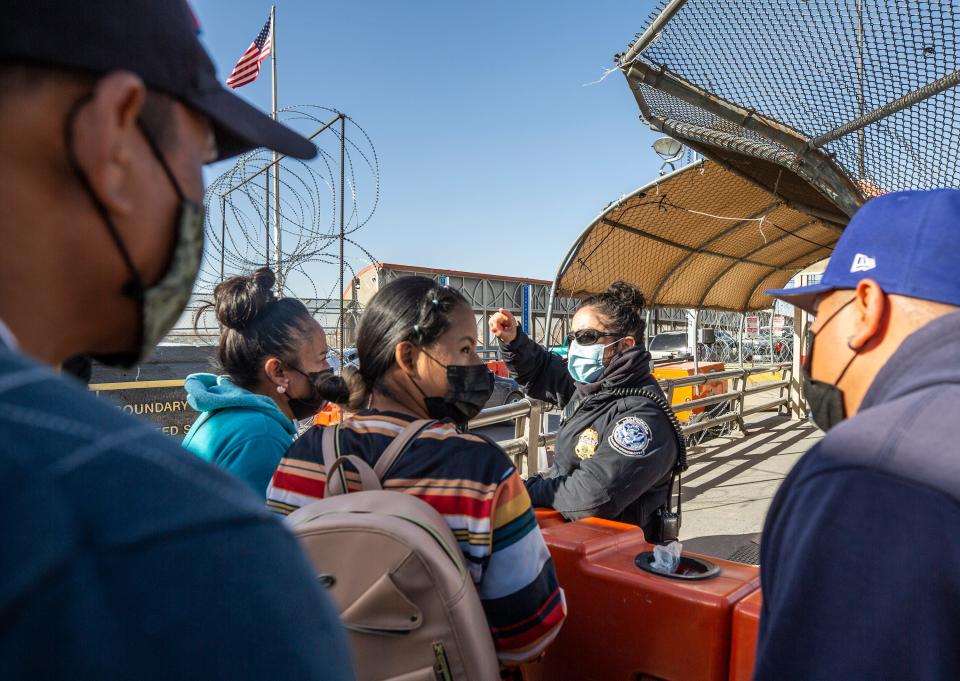Asylum seekers' odds of winning relief in immigration court rise under Biden administration
The odds of asylum seekers winning their case in a U.S. immigration court climbed in the first year of the Biden administration, even as the number of cases adjudicated declined.
Asylum seekers’ rate of success in U.S. immigration courts rose to 37% in the fiscal year that ended in September from 29% in the prior fiscal year during the Trump administration, according to the Transactional Records Access Clearinghouse at Syracuse University, which collects and analyzes federal immigration data.
U.S. immigration judges made 23,827 asylum decisions in fiscal 2021, down from 60,079 decisions in fiscal 2020.
Previously: Growing numbers of migrants seek asylum in the U.S., but many find a high bureaucratic wall

Of the fiscal 2021 decisions, 8,349 people won their asylum case while another 402 applicants earned another type of immigration relief. In fiscal 2020, immigration judges granted asylum in 15,976 cases while 1,514 people earned another type of immigration relief.
Under U.S. law, migrants who believe they are facing persecution can lawfully request asylum at the U.S. border or while inside the country. Immigration judges, who work for the Executive Office of Immigration Review inside the Department of Justice, have wide discretion in deciding cases.
"One of the things that has changed is that U.S. Attorney General Merrick Garland has turned over some of the more important precedent-setting cases from the Trump administration, like restoring the domestic violence basis for asylum," said Austin Kocher, an author of the TRAC report and assistant professor at Syracuse University.

Garland created more space for immigration judges to grant asylum, he said, through decisions that included allowing administrative closure in cases where an individual has access to another type of immigration relief or who isn't a priority for deportation under new rules for prosecutorial discretion.
At the same time, the composition of cases being heard by immigration judges may have shifted during the pandemic, Kocher said.
COVID-19 reduced operations in many of the country's 63 immigration courts and shut down operations altogether in others, including the court in El Paso for more than a year. Asylum seekers with legal representation — who statistically have better odds to win their claim — may also have had a better chance of getting a hearing during limited pandemic operations.
Courts housed in immigration detention centers also continued operating throughout the pandemic.

El Paso's four immigration judges have historically had among the country's lowest asylum grant rates. Between 2016 and 2021, El Paso immigration judges' asylum grant rates ranged from less than 1% to less than 25%.
Immigration courts saw fewer new applications in fiscal 2021, as well. There were 85,391 new applications in fiscal 2021, down from more than 194,000 in fiscal 2020, according to EOIR data.
The backlog of pending asylum cases also dropped in fiscal 2021 for the first time in at least 12 years as the number of asylum applications fell, according to EOIR data going back to 2008.
EOIR reported a backlog of 623,508 cases in fiscal 2021, down from 640,329 in the prior fiscal year.
Lauren Villagran can be reached at lvillagran@elpasotimes.com.
This article originally appeared on El Paso Times: U.S. asylum case backlog shrinks as applications decline in pandemic

